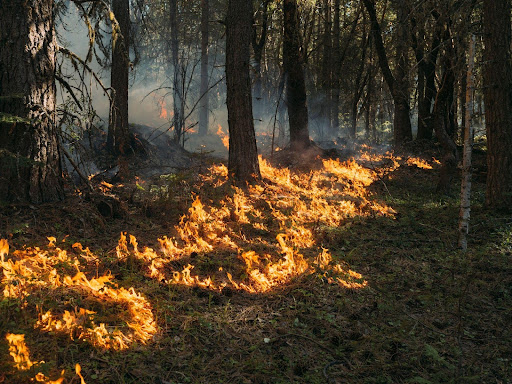From White Paper to State Bill: More Data is Needed on The Health Impacts of Wildfire Smoke in California


Since the report’s publication in September 2023, CCST has been engaging with state and federal policymakers working on wildfires and forest management, and the study team has seen report recommendations incorporated into a new state bill.
Photo credit: Zach Krahmer
Written by: Clare Loughlin, Communications Associate
Teresa Feo, PhD, Senior Science Officer at California Council on Science and Technology (CCST), started working on wildfires back in 2018, the same year the Camp Fire devastated Paradise, California, taking 85 lives and destroying thousands of structures. As California faced a growing wildfire crisis, she authored the 2020 CCST report “The Costs of Wildfire in California” with Sam Evans under the direction of an expert steering committee. This work more recently led CCST to partner with Blue Forest to produce “The Human Health Benefits of Forest Management in California,” published in 2023.
In Part II of the recent report, Feo led a literature review exploring the relationship between improving forest health and public health. The findings of this review informed the report’s steering committee of experts as they developed consensus policy recommendations to the State of California. The study team found a small but growing body of research that suggests improving forest health through active restoration techniques including prescribed fire can reduce wildfire smoke impacts under the right conditions.
“It’s a question of trade-offs. While the review uncovered studies that showed prescribed fire produces some smoke, it can mitigate uncontrolled destructive fire later on, reducing total smoke impacts from a landscape over time,” said Feo.
Data availability is key to better understanding those trade-offs. CCST and Blue Forest’s report identified several high-quality datasets tracking wildfire smoke plumes but found significant data gaps in quantifying PM2.5 directly attributable to wildfire smoke events. Should that data become available, it would be easier to attribute health impacts to wildfire smoke events. The study team also identified several additional data gaps and policy recommendations in the report.
Since the report’s publication in September 2023, CCST has been engaging with state and federal policymakers working on wildfires and forest management, and the study team has seen report recommendations incorporated into a new state bill. In January 2024, California State Senator Marie Alvarado-Gil introduced Senate Bill 945, incorporating some of the report’s recommendations for improving data products around smoke and health and directly citing the report in its press release.
This February, during CCST’s annual Science & Technology week of briefings and panel discussions, CCST hosted an expert briefing on “Pathways for a More Smoke-Resilient California.” A panel of experts in public health and wildfire management discussed opportunities to increase collaboration between forest managers and the public health sector on topics surrounding forest management and wildfire smoke.
“We have been in a lot of conversations since the report came out about communities trying to tackle forest health and wildfires,” Feo said. “We keep hearing from experts that for much of California, putting more fire back on the ground will help return our forests to a more natural fire regime.”
With degraded forest conditions and climate change creating conditions for immense, destructive wildfires, there is no smoke-free future for California. However, forest management techniques such as prescribed fire can reduce wildfires, reduce net wildfire smoke, and safeguard public health. Through the Forest Resilience Bond and the California Wildfire Innovation Fund, Blue Forest catalyzes the funds and partnerships needed to make restoration projects happen, including prescribed fire treatments in California.